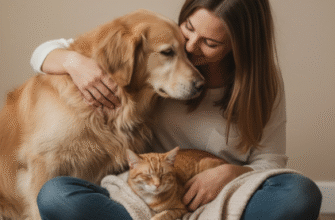In a world saturated with instant messages, fleeting social media updates, and overflowing email inboxes, the simple act of writing and sending a thoughtful letter feels almost revolutionary. Remember the unique thrill of finding a handwritten envelope addressed to you amidst the bills and junk mail? That little jolt of anticipation, the feel of the paper, the deciphering of familiar handwriting – it’s an experience digital communication simply cannot replicate. Taking the time to put pen to paper is a powerful way to deepen connections with the people you care about, offering a tangible piece of your thoughts and time.
Maybe the idea feels daunting. Where do you even begin? What if your handwriting is messy? What if you have nothing interesting to say? Let’s push those worries aside. A letter isn’t a formal assignment; it’s a conversation on paper, a bridge built across distance or even just across a busy week. It’s about showing someone they are worth the effort, that you paused your day specifically for them.
Finding Your Starting Point: Conquering the Blank Page
The biggest hurdle is often just starting. We get caught up in needing the perfect pen, the prettiest paper, or an incredibly profound message. Forget perfection. Grab any paper, any pen that works, and find a quiet moment. Five minutes is better than no minutes. Think about the person you’re writing to. Picture their face. What’s the first thing you’d want to tell them if they were sitting across from you?
Don’t overthink the opening. A simple “I was thinking about you today” or “It feels like ages since we properly caught up” is perfectly fine. The goal is connection, not literary genius. If inspiration feels dry, try these prompts:
- Recall a shared memory: “Remember that time we…” and describe a detail you both enjoyed.
- Mention something that reminded you of them: “I saw/heard/read something the other day that made me think of you…”
- Ask a specific, open-ended question: Instead of “How are you?”, try “What’s been bringing you joy lately?” or “How did that project you were excited about turn out?”
- Share a small, specific detail from your own life: Not just “Work is busy,” but “We finally launched that tricky project at work, and it felt amazing to see it go live.”
The key is specificity. Vague pleasantries are nice, but details make the letter feel personal and engaging. Think small moments, observations, and feelings rather than grand pronouncements.
Beyond Updates: Weaving Meaning into Your Words
While sharing news is part of letter writing, its true power lies in conveying feelings and strengthening bonds. Go beyond just reporting events; reflect on them.
Expressing Genuine Appreciation
It’s easy to take loved ones for granted. A letter is a wonderful opportunity to explicitly state your appreciation. Don’t just say “Thanks for being a great friend.” Elaborate. What specific qualities do you admire? How have they positively impacted your life? Try something like: “I was reflecting the other day on how much I value your calm perspective. Remember when I was stressing about X? Your advice to simply focus on the next step really helped me get through it. I’m so grateful for your wisdom.” This kind of detailed appreciation lands much more profoundly than a quick text.
Sharing Vulnerability (Appropriately)
You don’t need to pour out your deepest secrets, but sharing genuine feelings – joys, worries, hopes – makes the connection feel more authentic. If you’ve been going through a tough time, briefly mentioning it (without demanding a solution) lets the recipient feel closer to your real life. Equally, sharing small joys – the satisfaction of tending your garden, delight in a good book, pride in a child’s achievement – invites them into your positive experiences.
The Magic of Shared Memories
Nostalgia can be a powerful connector. Recounting a funny incident, a meaningful moment, or even a challenging experience you navigated together reinforces your shared history. “I was tidying my bookshelf and found that old photo of us at the beach – remember how freezing the water was, but we went in anyway? It made me smile thinking about how adventurous we used to be (and maybe still are!).” Evoking these shared experiences strengthens the foundation of your relationship.
Verified Impact: Studies in positive psychology suggest that expressing gratitude, like that done in a thoughtful letter, can significantly boost both the sender’s and receiver’s happiness and well-being. Taking a few minutes to write can create lasting positive feelings. It’s a small investment with a potentially big emotional return for everyone involved.
Making Your Letter Unique: Little Touches
While the words are paramount, small additions can enhance the experience.
- Include a photo: A recent snapshot, or even an old one that relates to a memory you shared.
- A small drawing or doodle: Especially charming if writing to children, but adults appreciate the personal touch too!
- A newspaper clipping or article: Something you think they’d find interesting.
- A pressed flower or leaf: A little piece of nature from your world.
These aren’t necessary, but they add another layer of thoughtfulness and transform the letter into a small, tangible gift.
Embracing Imperfection: The Human Touch
Worried about messy handwriting? Crossed-out words? Forget it! These are not flaws; they are signs of humanity. The slight imperfections of handwriting make it uniquely yours. A crossed-out word shows you were thinking, searching for the right phrase. Unlike the sterile perfection of typed text, a handwritten letter carries the physical trace of the sender. It’s proof that a real person, with their unique quirks, sat down and dedicated time just for the recipient.
Resist the urge to type it out first. Part of the charm is the spontaneity (even if you pause to think). Let the words flow directly onto the page. It feels more immediate and personal.
Cultivating the Habit: Weaving Letter Writing into Life
Like any meaningful practice, consistency helps. You don’t need to write novels every week. Aim for achievable goals.
Keep Supplies Handy
Have some simple cards or paper, envelopes, stamps, and a working pen easily accessible. If you have to hunt for supplies every time, you’re less likely to follow through. Put them in a drawer near where you relax in the evening.
Set Gentle Reminders
Maybe decide to write one short note or letter a month. Put a reminder on your calendar or link it to another activity (e.g., write while enjoying your Sunday morning coffee).
Lower the Stakes
Not every letter needs to be an emotional epic. A short postcard just saying “Thinking of you from my holiday” or a brief note sharing a funny observation is still a valuable point of connection. Vary the length and depth depending on your time and energy.
Important Note: Don’t let the pursuit of the ‘perfect’ letter stop you from sending any letter at all. A simple, sincere note received is infinitely better than a grand, eloquent masterpiece that never leaves your desk. Focus on the act of reaching out authentically.
Focus on the Joy
Try to view letter writing not as a chore, but as a pleasant, mindful activity. It’s a chance to slow down, reflect, and connect with someone important in a deliberate way. Think about the smile your letter might bring to their face. That feeling is often motivation enough.
The Enduring Power of the Written Word
Emails get deleted, texts get scrolled past, but a letter endures. It can be kept, reread, and treasured for years. It’s a physical reminder of care, a snapshot of a relationship at a particular point in time. In our fast-paced, digital-first world, taking the time to write a thoughtful letter is a profound gesture. It says, “You matter. Our connection matters. I’m taking this time just for you.” So, pick up a pen, think of someone you love, and let the conversation begin on paper. You might be surprised how much joy it brings, both to them and to you.








